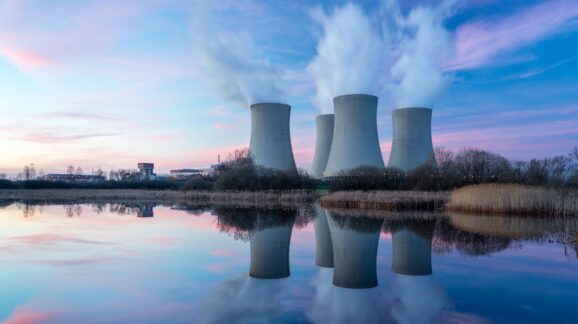New nuclear executive orders come at a time when power demand is rising

Photo Credit: Getty
On Friday, May 23, President Trump signed four executive orders related to nuclear power. These lay the groundwork for reforming nuclear regulation and enabling nuclear power to play a role in meeting rising power demand. If successful, the Trump administration believes its efforts will increase nuclear capacity to 400 gigawatts (GW) by 2050—double the target pledged by the Biden administration.
One of the orders, “Ordering the Reform of the Nuclear Regulatory Commission,” outlines reforms to the agency that controls civil nuclear power in the US.
This order highlights what most close watchers of the nuclear industry already know. Nearly every nuclear reactor in the US was built before the agency existed:
“Between 1954 and 1978, the United States authorized the construction of 133 since-completed civilian nuclear reactors at 81 power plants. Since 1978, the Nuclear Regulatory Commission (NRC) has authorized only a fraction of that number; of these, only two reactors have entered into commercial operation. The NRC charges applicants by the hour to process license applications, with prolonged timelines that maximize fees while throttling nuclear power development. The NRC has failed to license new reactors even as technological advances promise to make nuclear power safer, cheaper, more adaptable, and more abundant than ever.”
The two reactors alluded to above, Plant Vogtle Units 3 and 4, came online in 2023 and 2024, respectively. The construction of these reactors was far later than expected and over budget, in large part due to unpredictable regulation from the Nuclear Regulatory Commission (NRC) that changed standards repeatedly through the construction process. Because of unpredictable changes like this and the NRC’s regulations, nuclear developers have been unable to iterate and achieve economies of scale by building the same design over and over again. The first try is so hamstrung by interference that new efforts take years to materialize.
NRC has continually inhibited nuclear power in this country, rather than stewarding it. Last year’s ADVANCE Act made changes to the agency’s mission to attempt to fix this by including the facilitation of new nuclear projects/capacity in the mission. Before, the mission was exclusively focused on safety. This executive order goes further than the ADVANCE Act, reforming the agency’s culture and structure to allow better regulation of civilian nuclear power.
The order also directs the NRC, the Department of Government Efficiency, the Office of Management and Budget, and other involved agencies and departments to reassess and modernize existing NRC regulations. Given the stifling effect that most of these regulations have had on the nuclear industry, a reassessment of the regulations is sorely needed. Realistic nuclear regulation should allow reactors to be built on a reasonable timeline while ensuring safety, rather than the current paradigm that seems to be structured to maximize NRC fees for permit applicants and existing plant operators.
Nuclear power has an incredibly high capacity factor, operating nearly 93 percent of the time in the US This makes it an important source of electricity generation to meet the energy needs of Americans. It also complements energy-intensive industries like data centers that require round-the-clock power demand. As power demand from AI and other sources continues to rise, ensuring reasonable regulation of nuclear power would go a long way toward meeting that demand.
A version of this article first appeared on Independent Women’s Forum.